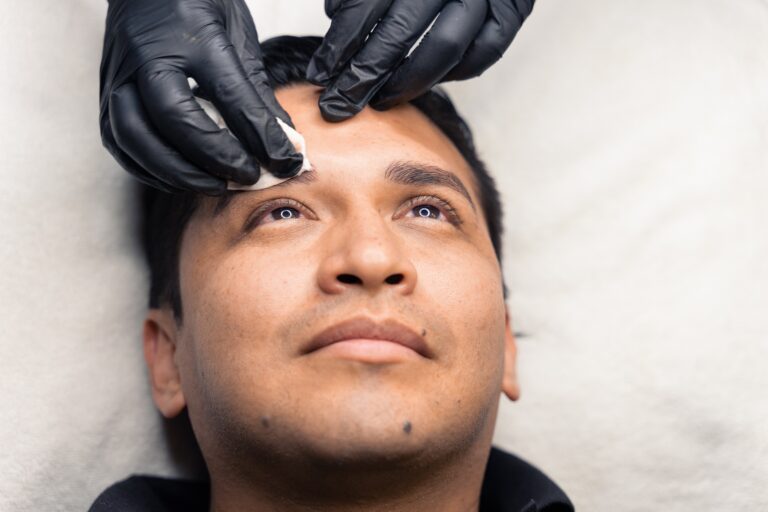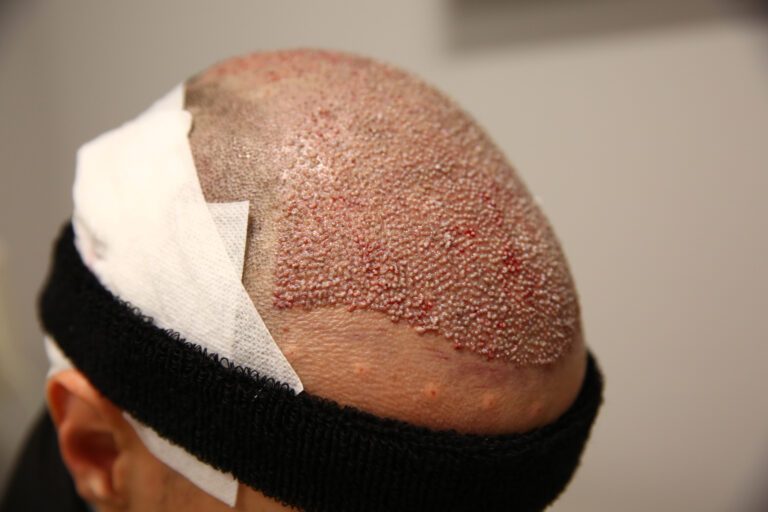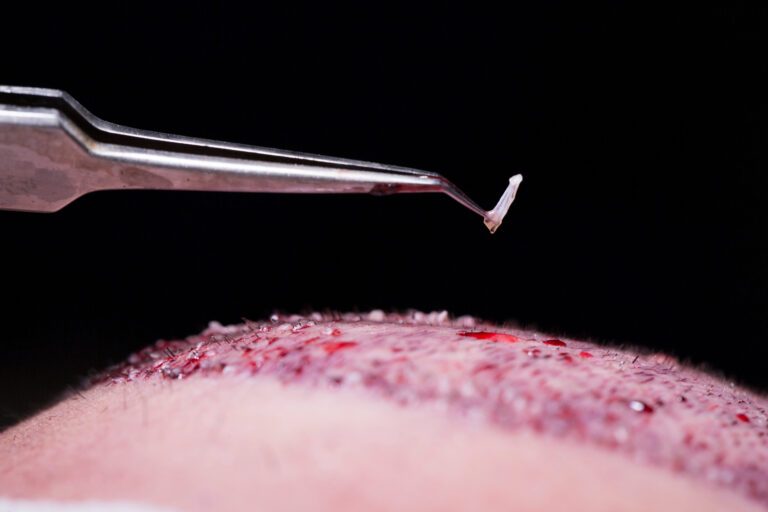Can You Restore Your Widow’s Peak With a Hair Transplant?
Although a widow’s peak is common, many people are unhappy with the way their natural hairline looks. For that reason, some resort to waxing, hairstyling, and other methods to fix that issue.
The problem is that those procedures are temporary. Plus, they only work if your widow’s peak is due to genetics and not a receding hairline. That’s when hair transplants enter.
This brings us to the question: can you restore your widow’s peak with a hair transplant? The short answer is yes!
Keep on reading for all the details!
What Is a Widow’s Peak?
A widow’s peak is a V-shaped hairline that forms in the center of the forehead. Usually, a widow’s peak is more common in males, but it can affect women as well. Genetics is the primary cause behind that hairline variation.
While it’s considered a natural characteristic, a widow’s peak can occur due to genetic disorders. Some of those conditions include:
- Aarskog syndrome
- Donnai-Barrow syndrome
- Optiz G/BBB syndrome
- Frontonasal dysplasia
Why Is It Called a Widow’s Peak?
The term stems from English folklore from the 19th century, when people believed that a V-shaped hairline was an omen of widowhood.
Back in the 16th century until the 19th century, a newly widowed wife would wear a distinctive hood with a pointed piece in the middle of the forehead. That mourning outfit resembles the V-shaped hairline, which resulted in the name “widow’s peak.”
What Is a Reverse Widow’s Peak?
As the name implies, a reverse widow’s peak is an inverted V-shaped hairline. Instead of having a pointed tip, people with a reverse widow’s peak experience hair decline in the middle of the forehead.
Like a widow’s peak, the inverted V-shape affects men more than women. The former pattern can occur because of a receding hairline, a genetic condition in males.
However, some hair loss diseases, like frontal fibrosing alopecia, can cause a reverse widow’s peak, mostly in women.
That condition is an autoimmune disease that results in permanent hair loss, scarring, and inflammation.
How to Fix a Widow’s Peak With Hair Transplant
Hair transplants are probably the most effective way to fix a widow’s peak because they are long-lasting.
Whether you have a receding hairline due to aging, male pattern baldness, or genetic diseases, the hair won’t grow back naturally. That’s because the follicles shrink, causing hair thinning. Over time, they become dormant and stop growing hair altogether.
In the case of autoimmune diseases, such as alopecia areata, the follicles grow hair. However, the body mistakes them for foreign objects and attacks the healthy tissues.
Luckily, hair transplants can restore receding temples and permanently fix the widow’s peak hairline. It’s worth mentioning that doctors don’t recommend hair surgery for alopecia areata patients unless there’s no recurrence after one year of treatment.
The question is this: which hair transplant fixes the v-shaped hairline?
Generally, there are two types of hair restoration surgeries. Those are FUT and FUE. Each procedure has its pros and cons. Regardless of the operation you choose, opting for a widow’s peak removal offers satisfactory before and after results.
Here’s a detailed explanation of each hair transplant surgery:
FUT
FUT is an abbreviation for follicular unit transplantation, and it’s an older technique compared to FUE. In the former procedure, the surgeon harvests hair strips from the head’s back—the donor area. That results in a linear scar, which is obvious once you wear your hair short.
A medical assistant takes the strip, dissects it into grafts containing one to four hairs, and assesses their quality.
The doctor then makes small incisions using a 1mm needle and implants the grafts with an implanter. He continues the former process until there’s no harvested hair left.
A surgeon’s artistic side and experience are crucial to mimicking a natural hairline and having a successful hair transplant surgery.
Typically, FUT costs less than FUE. Follicular unit transplantation also has a shorter operational time and is generally better for hair restoration operations that involve many hair grafts—above 4000.
However, since correcting a widow’s peak requires between 500 and 1800 grafts, on average, the former perk isn’t as important in this operation as having a complete hair transplant.
What’s more, it takes longer to heal from FUT than FUE because of the invasive nature of the strip harvesting procedure.
FUE
Follicular unit extraction, or FUE, is a more advanced procedure than FUT. It can be either manual or automated using a robotic system, the ARTAS. Regardless of the FUE operation type, the technique remains the same.
Like FUT, FUE follows similar steps. These involve extracting hair grafts from the donor site, assessing their quality, and implanting them into the recipient area. The difference is in the harvesting technique.
In an FUE procedure, the doctor uses punches, a cylindrical surgical tool that makes a circular cut around the hair follicle. With fine forceps, the surgeon extracts the graft.
As you can see, FUE can be time-consuming since it requires harvesting one hair follicle at a time. That’s why it costs more than FUT.
Additionally, there’s the risk of damaging the grafts while using the forceps.
However, this procedure is minimally invasive and doesn’t leave any scars. So, it’s suitable for wearing your hair short.
How to Get Rid of Widow’s Peak
Aside from surgery, here are other solutions that’ll help you get rid of widow’s peak:
Hairstyling
You’d be surprised at how much a good haircut can transform your appearance. The best part is that changing your hairstyle can make your widow’s peak disappear without having to undergo surgery and paying a hefty price.
You’ve also got a plethora of options to choose from. For instance, you can opt for a buzz cut if you want a low-maintenance hairstyle that doesn’t show your hair texture.
If you want to show off your widow’s peak in a classic, sophisticated way, the slick-back haircut is an excellent option. You can consult a hairstylist to determine the best haircut to hide your widow’s peak, depending on your face structure.
Waxing
This one might sting a bit; however, waxing is a quick method to remove unwanted hair on your forehead and get rid of that v-shaped hairline. The best part is that the results can last for several weeks.
You can also do it yourself or visit a salon for a professional’s help. Of course, this method is only effective if you have a few extra hairs in the middle of your forehead. However, waxing might not be suitable for a widow’s peak hairline due to male pattern baldness.
Hair Removal Creams
Like waxing, you can use hair removal creams to remove the extra hair that causes a widow’s peak hairline.
Typically, those products contain thioglycolic acid as the active ingredient. The former is a chemical that breaks down keratin, a natural protein that’s the key structural material in hair and nails.
As a result, the depilatory cream weakens the hairs, causing them to dissolve and fall off. This treatment isn’t painful and doesn’t cause skin irritation—as long as you’re not allergic to its chemicals. It can also cause fewer lesions than waxing.
All the above sounds great. However, hair removal creams don’t remove the hair from the roots. Consequently, you can expect hair growth within two to three days.
Laser Hair Removal
Instead of repeating the same hair removal process every couple of days, you can permanently remove your widow’s peak with laser hair removal.
During laser hair removal, the device emits light that’s absorbed by melanin, the pigment responsible for hair, eyes, and skin color. As a result, the light energy converts to heat, which damages the hair follicles and prevents them from growing hair.
However, laser hair removal is more expensive compared to waxing, depilatory creams, and other at-home hair removal methods.
Hair Growth Treatments
Now, if you’re still at an early stage of pattern baldness, you can try non-surgical hair growth treatments to restore your hairline and get rid of a widow’s peak.
Some of the famous hair growth treatments include minoxidil. The former is a topical medication that shortens the hair’s resting phase and extends the growth phase, causing the hair to grow quickly.
Other hair-stimulating treatments include hormone medications like finasteride, low-level laser therapy, and platelet-rich plasma injections.
However, it’s worth mentioning that those options aren’t as effective as a hair transplant since they’re not long-lasting. Additionally, they don’t provide full coverage, as they can’t stimulate dormant hair follicles to grow hair.
Conclusion
As you can see, several ways can help you fix a widow’s peak. Those include surgical and non-surgical treatments.
The former includes FUT and FUE, the two primary hair transplant options. Both procedures differ in their cost, operation time, and recovery procedure. However, they present a permanent solution to fixing a widow’s peak, especially if you’ve developed a v-shaped hairline because of balding.
Non-surgical solutions, on the other hand, include hair removal treatments like waxing, laser, and depilatory creams. Alternatively, you can try hair growth medications to get rid of a widow’s peak.
In the end, the decision to fix a widow’s peak is up to your preference, and you should weigh the benefits and drawbacks of those options before proceeding with any treatment.







